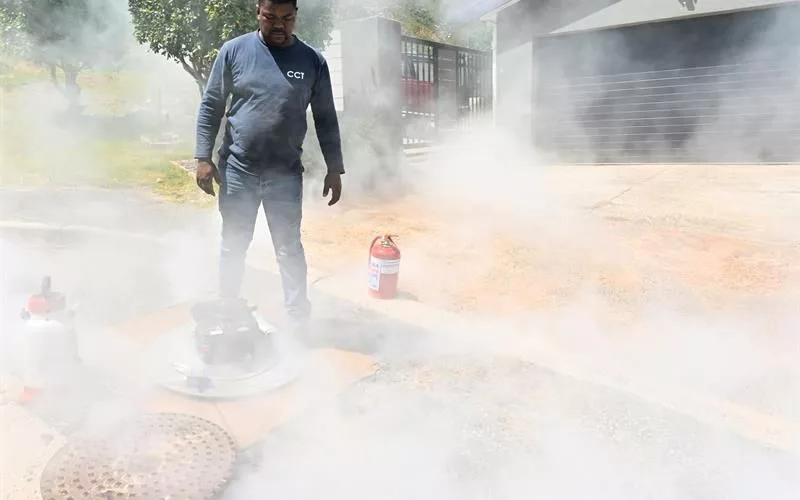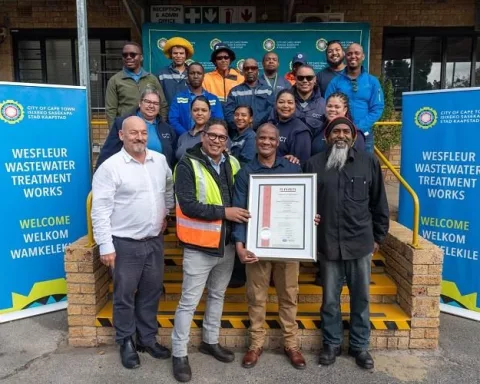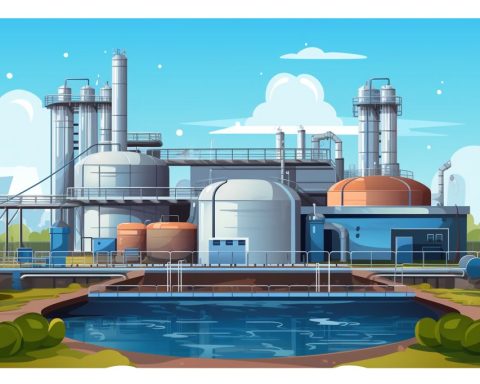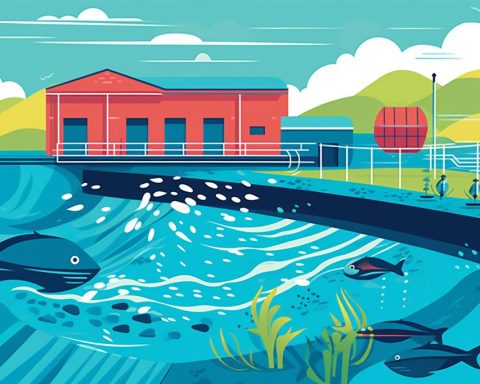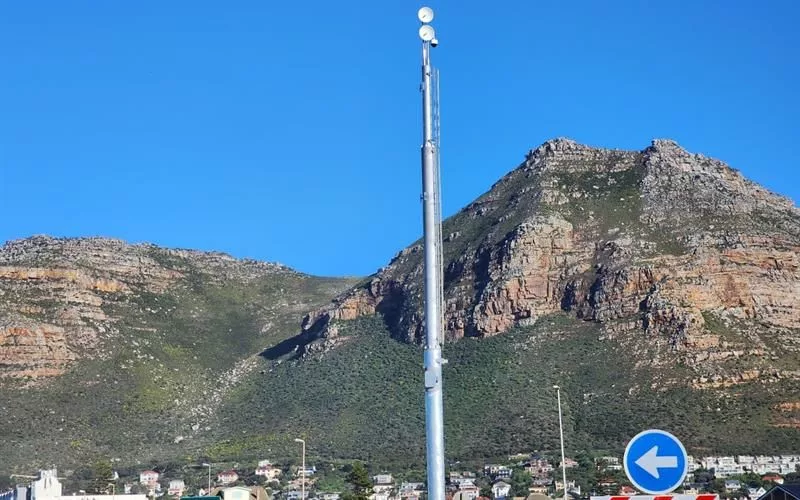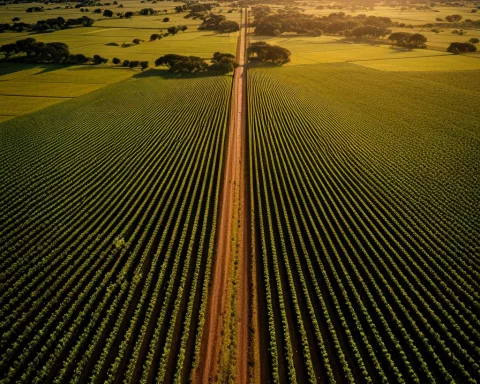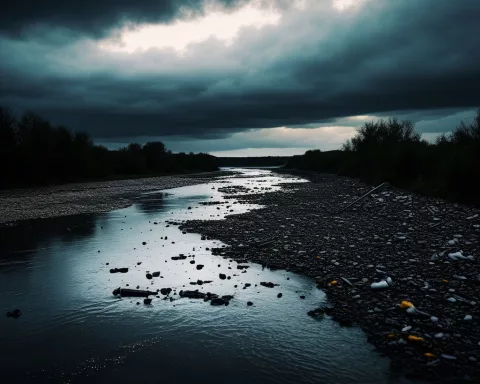Smoke testing is a technique used to identify illegal connections to sewer systems that worsen pollution and sewage overflows. The Water Pollution Control Unit has developed this innovative approach to tackle urban water pollution, especially during the winter season. By pumping smoke into sewer pipes, the surveillance team can locate improper connections or weaknesses in the infrastructure and notify owners for required repairs. This initiative has produced promising results, and the City plans to continue its efforts to protect the environment and water resources.
What is smoke testing for sewer systems?
Smoke testing is a technique used to identify improper or illicit connections to sewer systems that exacerbate the problem of wastewater treatment. The process involves a machine known as a smoke blower, which pumps smoke into a sewer pipe. Surveillance teams then note where the smoke leaks out and identify any illegal connections or weaknesses in the sewer infrastructure. If violations are discovered, the owners of the property receive a notice detailing the city’s findings and providing instructions for required repairs.
Section 1: The Emergence of an Innovative Solution
Over the past ten years, a new cutting-edge approach has been developed by the Water Pollution Control Unit to combat the ongoing issues of pollution and sewage overflows. This department, which falls under the greater umbrella of the Water and Sanitation Directorate, has led the charge in tackling urban water pollution.
Their initiative, known as smoke testing, becomes exceptionally important during the winter season. This is when the city’s sewer system is under particular strain due to a surge in rainfall. The technique helps in locating improper or illicit connections to the sewer system, which often exacerbate the issue of wastewater treatment.
These improper connections may include uncontained sewer gullies that lack defensive walls to stop stormwater from seeping into the sewer, and gutter downpipes misdirecting rainwater into the system. These infringements heighten the challenge of wastewater treatment, putting unnecessary pressure on the city’s infrastructure.
Section 2: The Mechanics of Smoke Testing
The smoke testing procedure, while ingenious in design, is simple in execution. A machine known as a smoke blower is positioned over a manhole that leads directly to a sewer pipe. Once the machine is warmed up and switched on, it pumps smoke into the pipeline.
The surveillance team then notes where the smoke leaks out, identifying any illegal connections or weaknesses in the sewer infrastructure. If any such violations are discovered, the owners of the property receive a notice detailing the city’s findings and providing instructions for required repairs.
According to Councillor Zahid Badroodien, the City’s Mayoral Committee Member for Water and Sanitation, these illicit connections not only amplify the likelihood of overflows, but also force wastewater treatment plants to process water that would not otherwise require treatment. This unnecessary processing places a demand on resources and raises environmental concerns.
Section 3: Significant Achievements and Future Prospects
The Mayor has outlined the enhancement of inland water quality as a critical goal. The smoke testing initiative has already produced promising results. Remarkably, the City exceeded its targets by inspecting 272 kilometers of sewer pipeline throughout the city in the 2022/2023 financial year. The team is also on track to meet their aim of investigating 170 kilometers in the current 2023/2024 financial year, reflecting a dedicated effort to protect the city’s water resources.
The Water Pollution Control teams follow a meticulously planned, citywide schedule. Residents are given a knock-and-drop notice in advance of inspections in their area. The selection of testing zones is dictated by several factors such as increased inflow into the nearest wastewater treatment facilities, a rise in sewer blockages, stormwater ingress issues, and sewer surcharges.
Section 4: Current Focus and Future Plans
Lately, the team has been concentrating their efforts on Gordon’s Bay, where they have conducted a blend of smoke testing and door-to-door inspections on 6,370 properties. Over the coming months, they plan to extend their work to Strand, with the aim of completing the testing of a 74-kilometer pipeline that serves roughly 5,000 homes.
This strategic and methodical approach is a testament to the City’s unyielding commitment to protecting its environment, particularly its water resources. Through the inventive smoke testing method, the City is able to pinpoint and correct illegal connections. Moreover, it sends a powerful message about the significance of responsible water usage and the potential consequences of violating these standards. The success of this initiative serves as a compelling reminder that the preservation of our environment demands ongoing vigilance and innovative strategies.
1. What is smoke testing for sewer systems?
Smoke testing is a technique used to identify improper or illicit connections to sewer systems that exacerbate the problem of wastewater treatment. The process involves a machine known as a smoke blower, which pumps smoke into a sewer pipe. Surveillance teams then note where the smoke leaks out and identify any illegal connections or weaknesses in the sewer infrastructure. If violations are discovered, the owners of the property receive a notice detailing the city’s findings and providing instructions for required repairs.
2. How does the smoke testing procedure work?
A machine called a smoke blower is placed over a manhole that leads directly to a sewer pipe. Once the machine is warmed up and switched on, it pumps smoke into the pipeline. The surveillance team notes where the smoke leaks out, identifying any illegal connections or weaknesses in the sewer infrastructure. Property owners are notified if violations are discovered, and they must make the necessary repairs.
3. What are the benefits of smoke testing for sewer systems?
Smoke testing helps identify illicit connections to the sewer system, such as uncontained sewer gullies or gutter downpipes misdirecting rainwater into the system. By locating and repairing these improper connections, it helps mitigate the problem of wastewater treatment and reduces the likelihood of sewage overflows. This innovative approach helps protect the environment and water resources.
4. How successful has the smoke testing initiative been?
The initiative has been successful, with the City exceeding its targets by inspecting 272 kilometers of sewer pipeline throughout the city in the 2022/2023 financial year. The team is also on track to meet their aim of investigating 170 kilometers in the current 2023/2024 financial year. The Water Pollution Control teams follow a meticulously planned, citywide schedule, and the program has already produced promising results.
5. What is the City’s current focus and future plans for smoke testing?
The team has been concentrating their efforts on Gordon’s Bay, where they have conducted a blend of smoke testing and door-to-door inspections on 6,370 properties. Over the coming months, they plan to extend their work to Strand, with the aim of completing the testing of a 74-kilometer pipeline that serves roughly 5,000 homes. The City plans to continue its efforts to protect the environment and water resources through this innovative approach.
6. How does smoke testing contribute to responsible water usage?
By identifying and repairing illegal connections to the sewer system, smoke testing helps mitigate the problem of wastewater treatment and reduces the likelihood of sewage overflows. This approach sends a powerful message about the significance of responsible water usage and the potential consequences of violating these standards, and it serves as a compelling reminder that the preservation of our environment demands ongoing vigilance and innovative strategies.


